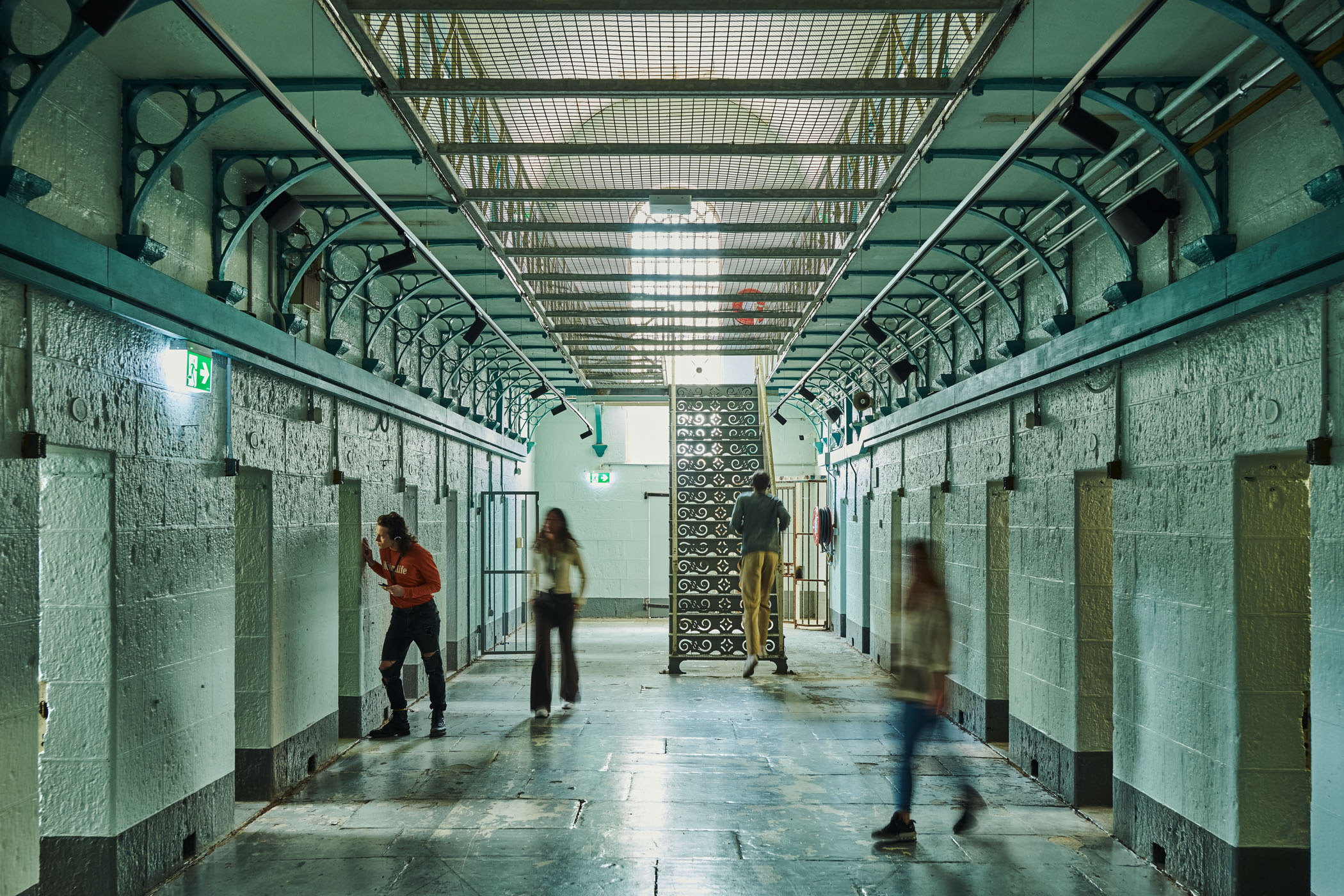The history, heritage, and restoration
of Pentridge.
Established in 1851, Pentridge is a
state significant, heritage listed former
prison site.
Over almost 150 years, the word ‘Pentridge’ became eponymous with prison. Following the closure of the Melbourne Gaol in the 1920s, Pentridge became the main remand and reception prison for the Melbourne metropolitan area.
Pentridge has housed some of Australia’s most infamous criminals and forms an emotional and dark place in many hearts and minds.
Pentridge is now at the beginning of
a new chapter, undergoing a revival as a destination and meeting place.
The prison finally closed in 1997. At its end, the conditions within were outdated and not up to any modern standard.
The Victorian Government sold the prison in 1999 and since then the prison has seen several different owners.
Purchased by the Shayher Group in 2013, in a derelict state, the depth of the site’s cultural significance has guided its redevelopment.
By changing the perspective from a derelict site to one of Melbourne’s cultural assets, the iconic bluestone walls of Pentridge live on to see a new era.
There are many stories to be shared, there is much to learn and reflect on, as we acknowledge the history entrenched at Pentridge.
Preserving the past
Pentridge’s past is riddled with suffering, of which we remain respectful. Areas of historical significance remain protected and heritage elements are being retained to serve as a humbling reminder of the past. We seek to create a place that recognises the importance of Pentridge’s past, whilst welcoming a new community of residents, locals, and visitors.
The Conservation Management Plan sets out the basis for the preservation of the physical environment at Pentridge. The Heritage Interpretation Masterplan sets out our approach to showcasing and interpreting the history and heritage of Pentridge.
Pentridge Prison Tours launched in 2023, giving all a chance to look inside the walls of one of Australia’s most infamous prisons.
The history of Pentridge
Pentridge Stockade
The prison begins as a stockade made of moveable log hulks surrounded by inadequate fencing. Local residents are outraged by the lack of security.
The gold rush and population boom
Between 1857 and 1864, the second phase of Pentridge Prison construction is undertaken. The perimeter walls, the administration building, A, B and the later named C and F Divisions and the Warders’ Residence are built during this period.
Separate and silent
Also known as Panopticons, there are only eight known airing yards of this style in the world. Three of these were found at Pentridge.
A new main prison for women
From Pentridge to Coburg
A petition is signed by 191 residents and landowners and submitted to the Board of Land and Works. The government consents to the change and in March 1870, Pentridge (the district) is officially renamed Coburg. Coburg has royalist associations and proved a popular choice. Other names included Merrivale (due to Merri Creek), Tipperary, Donegal and Limerick which were suggested by Irish-born residents at the behest of local Protestants.
The prison philosophy of silence and solitude continues to reign
The Stawell Royal Commission
Another female prison within Pentridge
Completely segregated from the male prison, the division has a female Governor and female prison guards.
The growth of Pentridge
The end of Pentridge’s women’s prison
The cell block building previously used to hold female prisoners becomes the Metropolitan Gaol for prisoners on remand, and now known as D Division.
H Division
The last hanging
In 1985, the death penalty is abolished in all states of Australia.
Inhumane prison cell conditions
Pentridge under scrutiny
Scrutiny leads to demolition
A new maximum-security division
A deathly fire
The official closure of Pentridge
In 1999, the State Government of Victoria sells Pentridge to developers Crema and Barbon in partnership with the Chiavaroli’s.
Development and Restoration
The sale of Pentridge
In 2007, Pentridge Coburg changed hands. During this time, the old Pentridge Stockade area to the east of what is now Stockade Avenue is developed into housing, leaving the Pentridge Piazza (old mustering yard) and all the bluestone heritage buildings in need of maintenance, restoration and reactivation.
A new vision for Pentridge
Work in progress at Pentridge
The state of the prison and its heritage buildings is one of disrepair. The grounds are overgrown, heritage building roofs have collapsed and flood damage is prevalent.
The end of J Division
Archaeology work underway
Infrastructure work begins
Non-original parts of the Rock Breaking Yards are partially demolished in preparation for restoration.
The Murray Road northern perimeter bluestone heritage wall is reinforced and saved from collapse.
Rock Breaking Yard restoration
Construction of the Horizon apartments begins, road and infrastructure work continues.
Pentridge opens its doors
A new beginning at Pentridge
Restoration of the A Division roof, completion of the Rock Breaking Yards restoration (restored to their condition of the early 1900s) and restoration of the Guard Towers are carried out in 2016.
The Horizon Apartments build is completed, marking the beginning of a new community of residents at Pentridge.
Restoration continues
The strip-outs remove modern changes to the buildings, expose their heritage fabric including original room sizes and ceiling heights.
Community Pavilion design competition
The permit application is subsequently refused at Heritage Victoria and the project does not proceed.
Heritage facade restorations and Shopping Centre excavation
Piazza landscaping works commence.
Excavation of the Pentridge Shopping Centre basement car park begins.
Building of Pentridge Shopping Centre commences
Apartment construction
Completion of Piazza and heritage restoration
A new era at Pentridge begins
Heritage restoration work
Pentridge Prison Tours
